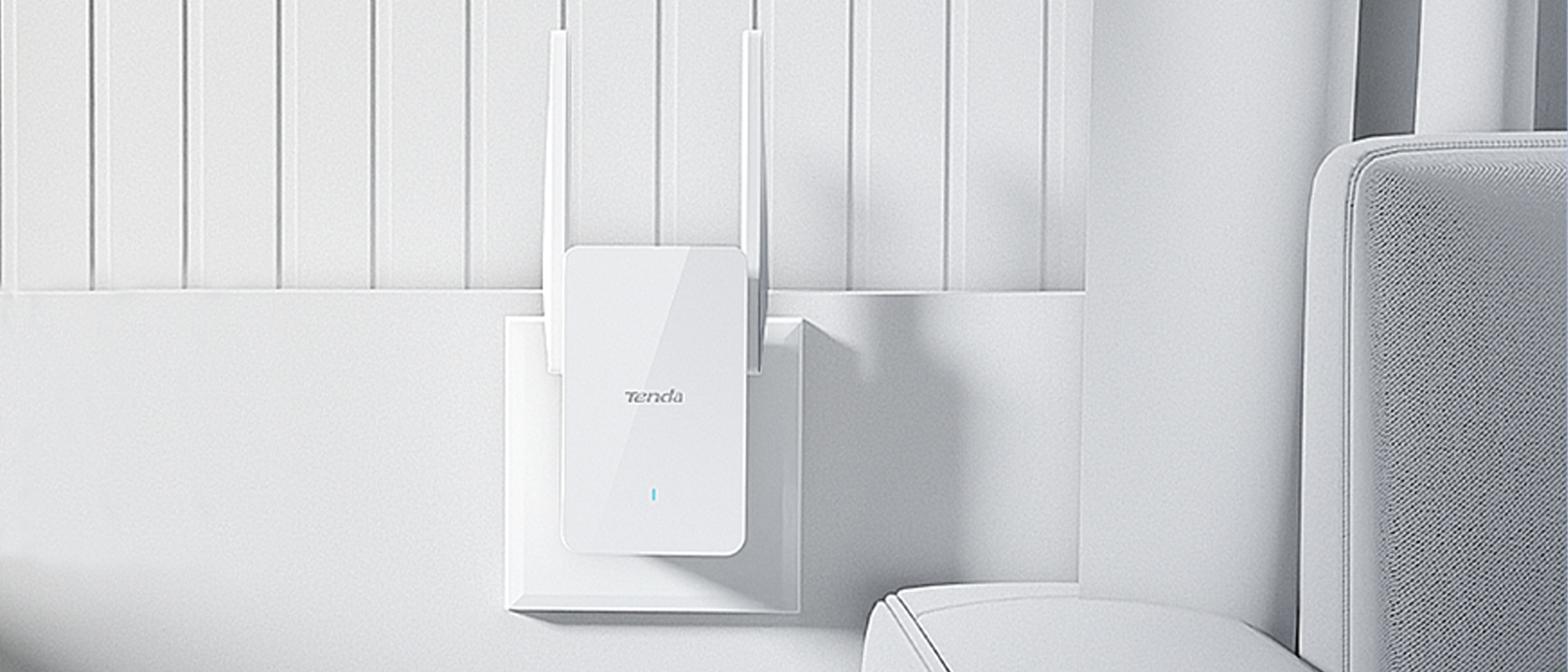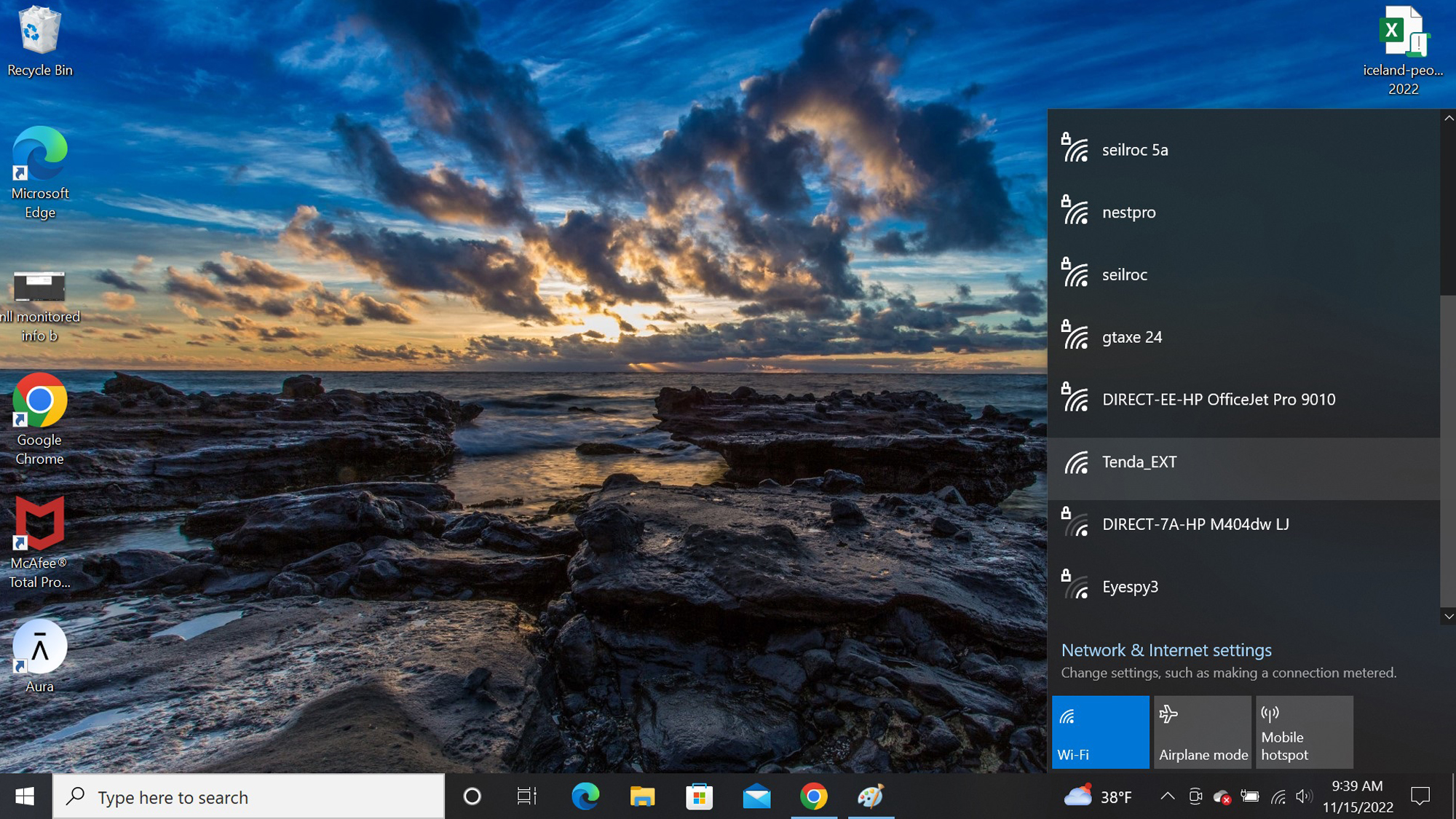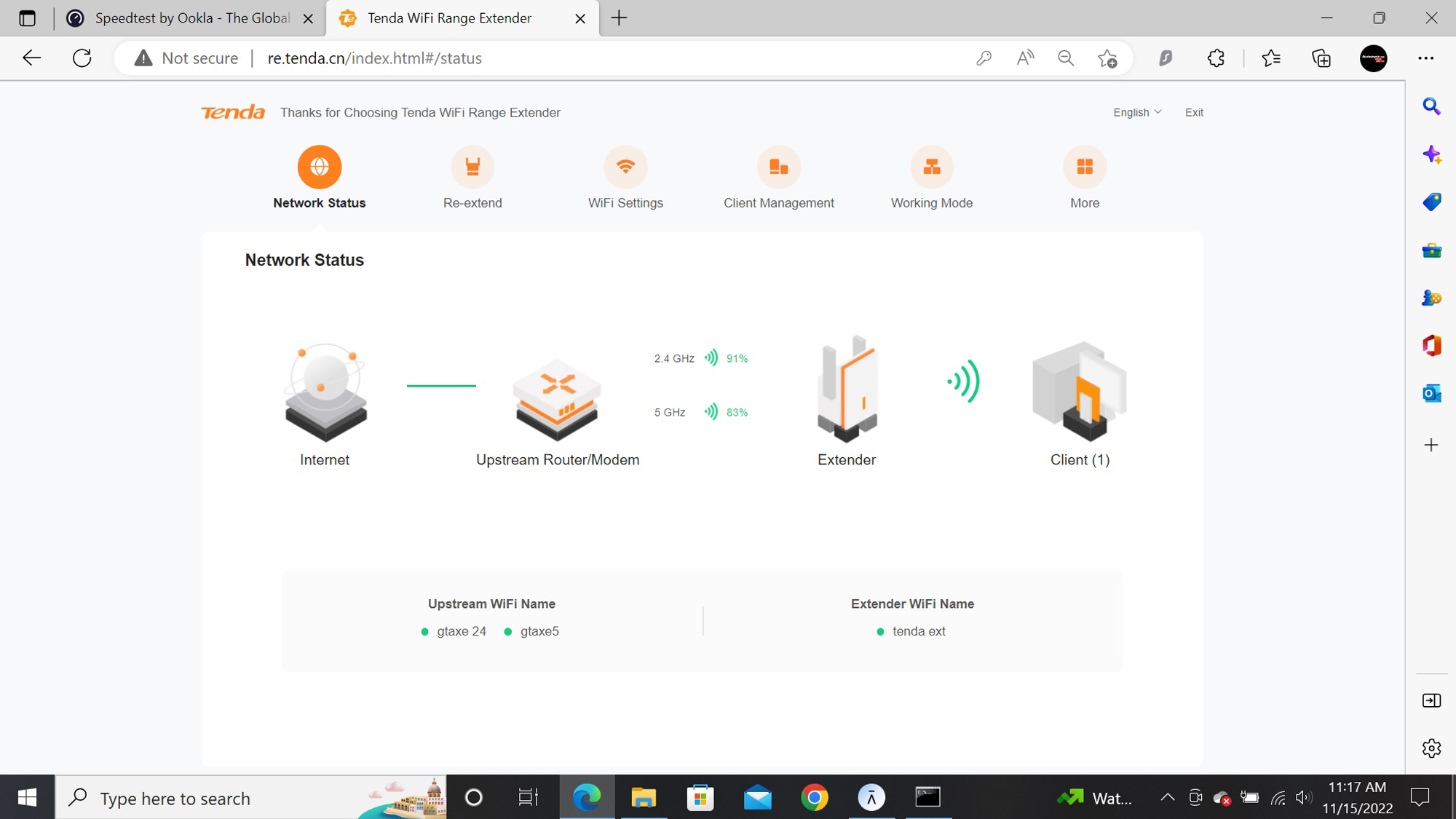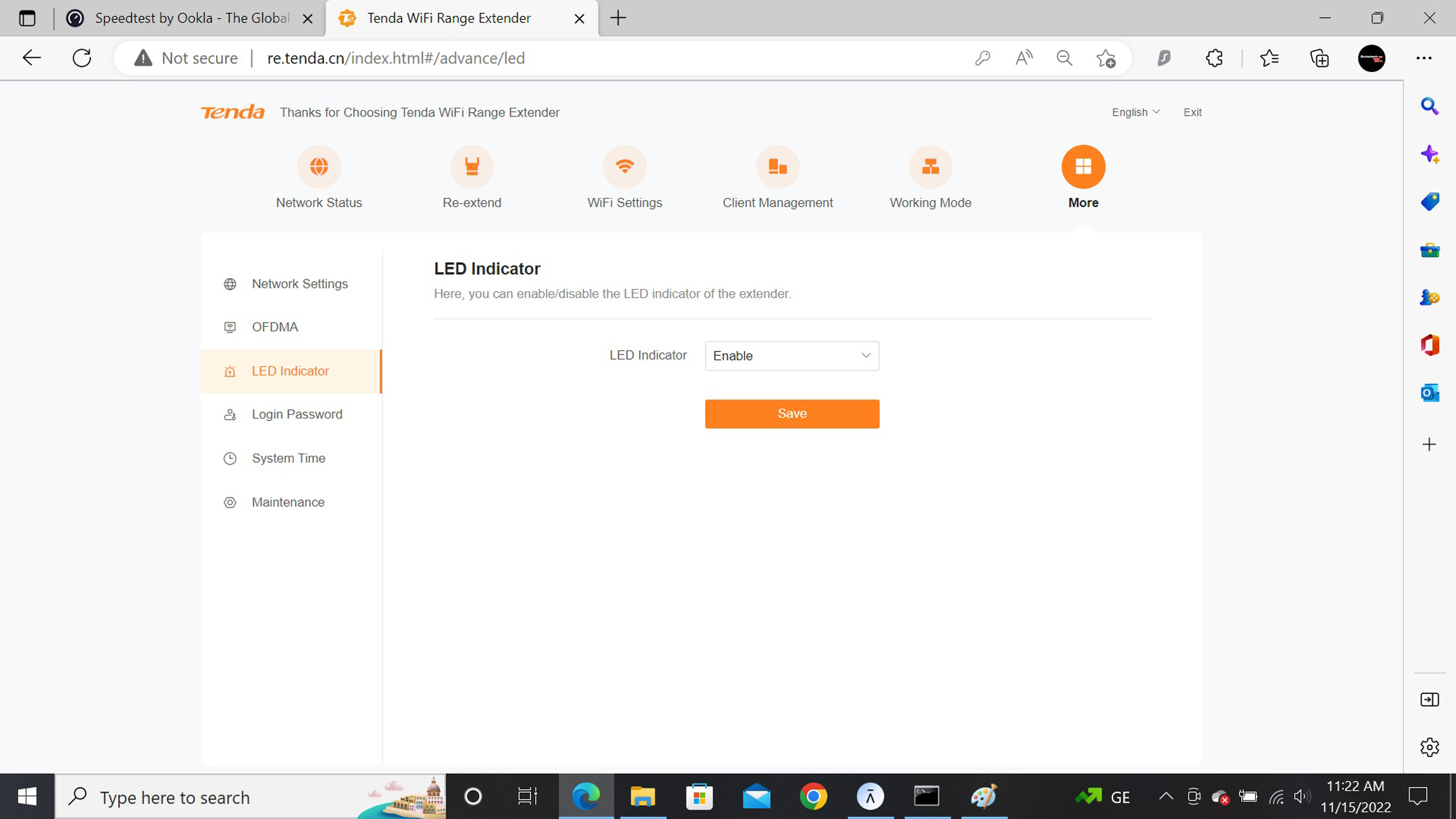Tom's Guide Verdict
It may not be the smallest or cheapest Wi-Fi extender, but the Tenda A27 is easy to configure and can stretch a Wi-Fi network into new parts of a home.
Pros
- +
Extender or access point operation
- +
Good customization potential
- +
Three-year warranty
- +
Reasonable performance
Cons
- -
No USB port for adding storage drive
- -
Lacks setup app
Why you can trust Tom's Guide
Wi-Fi Spec: AX1800
Number of Antennas/Removable: 2/No
Ports: 1 LAN gigabit per second
Peak 802.11ax performance: 294.3Mbps
Range: 55 feet
Size: 4.8 x 3.6 x 1.9 inches
Estimated Annual Electricity Cost: $7.90
With reasonable performance and some of the most thorough customization options in an extender, the Tenda A27 is for those who like to tweak their settings. Its three-year warranty is one of the best in the business and the extender can run as a wired access point but lacks a USB port for adding a storage drive to the network.
Our Tenda A27 review will help you decide if this is the best Wi-Fi extender to expand the reach of your home network or if you’d be better off with another one of the extenders on our list.
Tenda A27 review: Pricing and availability
Priced at $60, the Tenda A27 is a bargain of a Wi-Fi extender that can also act as a wired access point. Each unit can cover roughly 2,000 square feet, according to the company’s engineers.
Tenda A27 review: Design
A medium sized extender, the Tenda A27 measures a modest 4.8 x 3.6 x 1.9 inches. That’s about 15 percent smaller than the Linksys RE7310 and positively tiny next to the Netgear Nighthawk EAX80 or NexusLink WB-1750.
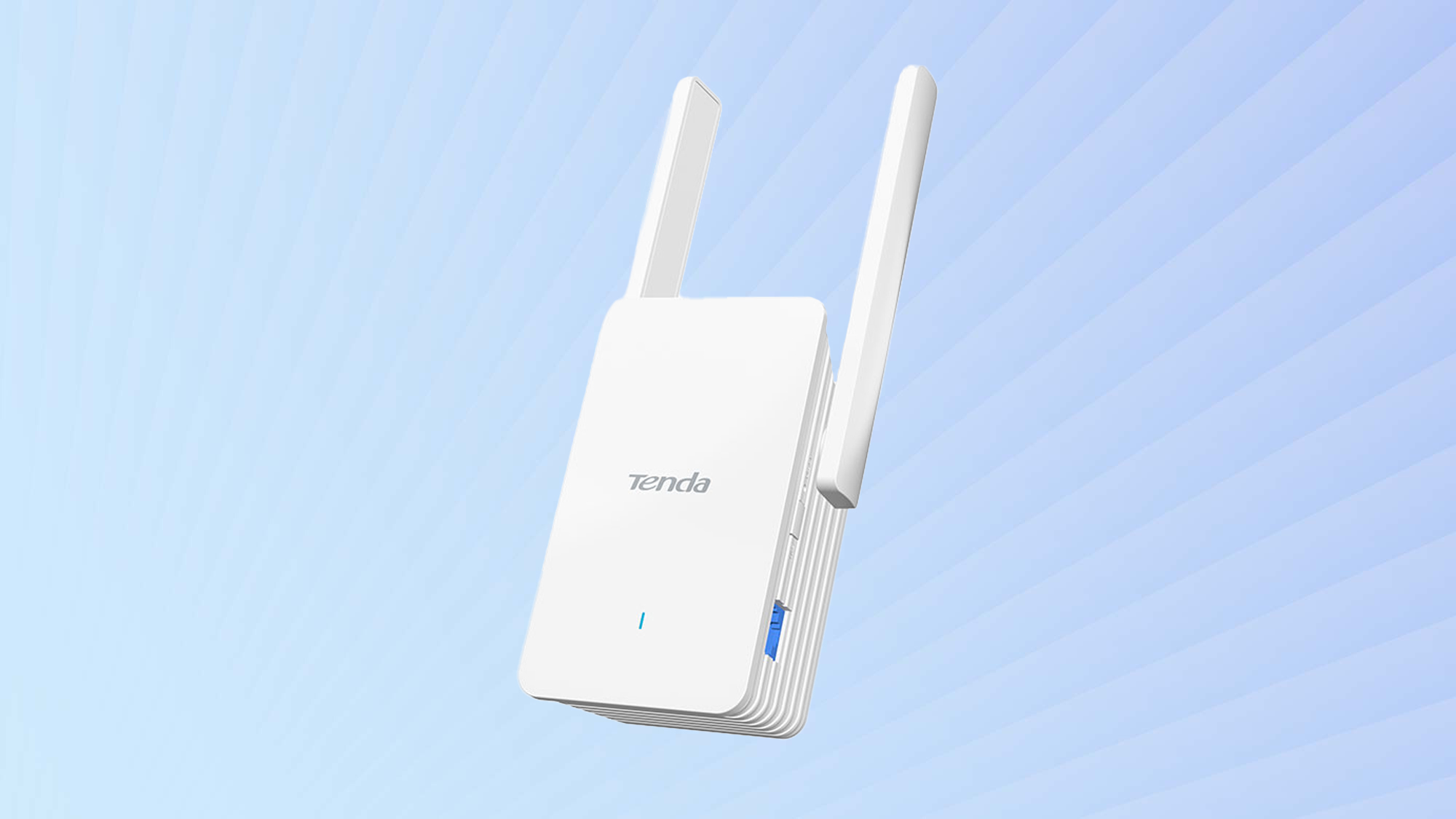
Like the D-Link E15, the A27 has a pair of powered paddle antennas but rather than fold outwards, they can rotate to aim the transmissions. Its two-prong plug goes directly into a wall outlet. There’s a single LED bar near the bottom of the A27 that blinks red when it’s ready to be set up, blue for when it’s online and yellow when the connection could be better. When it’s solid red, the extender is offline. The LED can be turned off using a connected browser.
Tenda A27 review: Performance
With the ability to cover up to 2,000 square feet, the Tenda A27 did well in my 100-year-old home, pushing the Wi-Fi network into new areas. It was able to move 294.3Mbps with the extender 40 feet from the Asus AXE-11000 router and the Samsung Galaxy Book Pro test system another 10 feet away. That’s about one-third more throughput than the D-Link E15 was capable of but well short of either the TP-Link RE705X’s 528.0Mbps or the Nighthawk EAX80’s 358.0Mbps.
With the receiving notebook 40 feet from the extender, it fell short of its competitors with only 50.6Mbps of bandwidth available. That’s one-sixth the performance of the Nighthawk EAX80.
Get instant access to breaking news, the hottest reviews, great deals and helpful tips.
When the test system was moved upstairs to a bedroom, the throughput was a more reasonable 173.1Mbps, with slightly higher performance than the Linksys RE7310 and half the Nighthawk EAX80’s 358.0Mbps.
The system had a range of 55 feet. In most places it was able to move emails, play music and show 4K videos. The A27 consumed 4.8 watts, which translates into an annual estimated cost of $6.30, which is on a par with the E15’s $6.15
It barely kept its cool, hitting a peak of 107 degrees Fahrenheit, despite its array of cooling vents. The E15’s 115-degree Fahrenheit surface temperature was higher though.
Tenda A27 review: Features
While connected, the A27 can service a home’s worth of clients, extending a Wi-Fi network into new parts of a home. Along with MUMIMO, beamforming and 1024 QAM modulation, the A27’s 5dBi amplified antennas help it to grab a weak Wi-Fi signal, boost it and retransmit it.
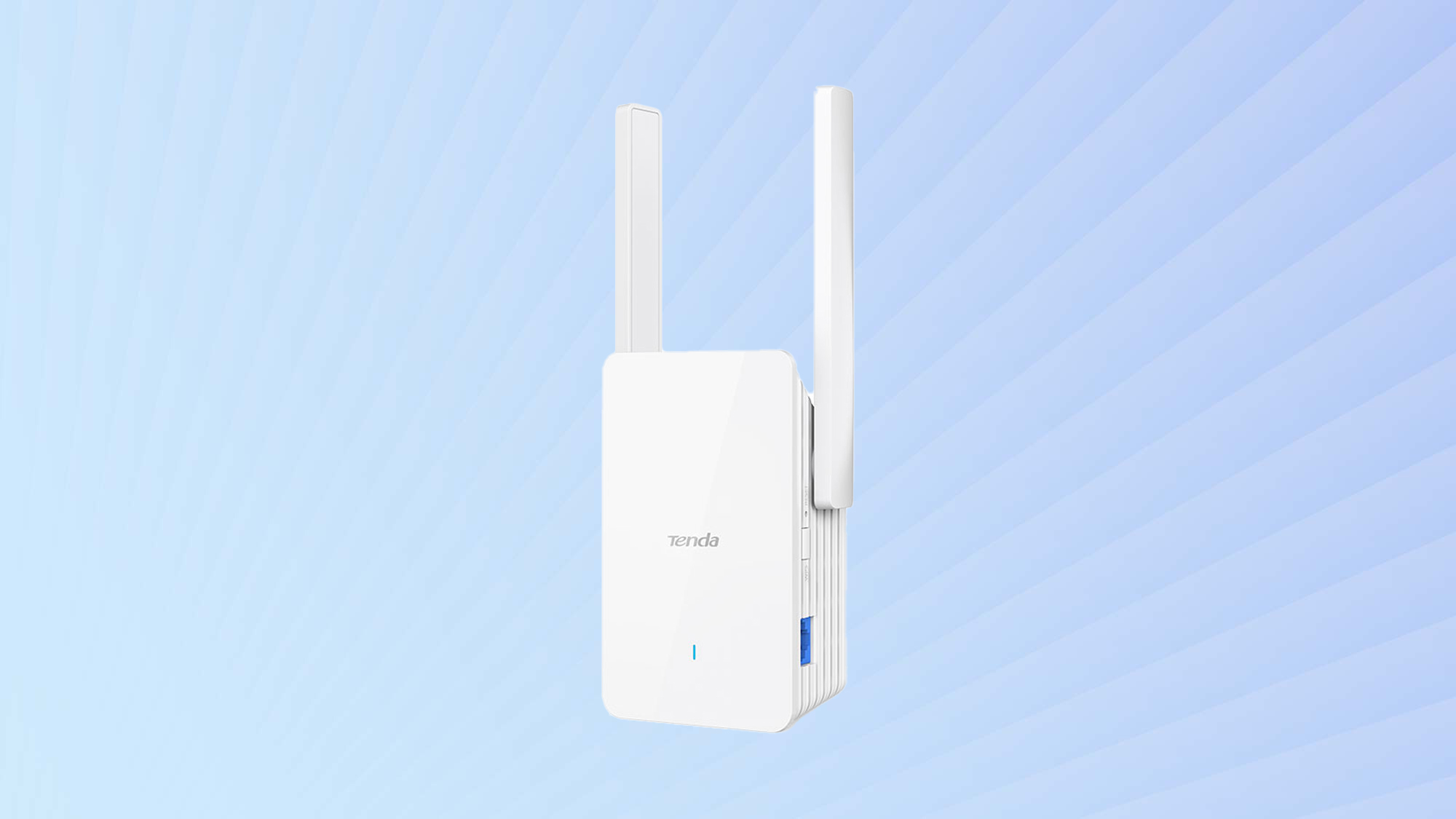
Inside is a dual-band extender that can tap 2X2 streams for each band. The A27 comes up a little short with the ability to deliver 574Mbps with the 2.4GHz band and 1,201Mbps using the 5GHz band. It adds up to 1.775Gbps total theoretical peak throughput, does without the D-Link E15’s AI-based load balancing and can’t extend a Wi-Fi 6E 6GHz signal, however.
There’s a gigabit per second Ethernet port on the side for using the A27 as a wired access point, something that the Linksys RE7310 can’t do. Next to it are buttons for activating the WPS sequence for quickly getting it online and a recessed reset button.
Tenda A27 review: Setup and software
Getting the A27 set up is quick, but I encountered a snag on my first try but nailed the second time around. All told, it took 5 minutes. Its three-step process started with me plugging the A27 in and setting my computer’s browser to the extender’s network: “tenda_ext”.
When its LED was blinking red, I clicked “Start now” and was on my way.
After I added an administrator password for making changes, I picked the extender option over the access point one and typed the extended network’s name and password.
Next, I clicked “Extend”. And it was connected in less than 15 seconds. The page showed a summary of my new settings.
With the extender online and filling in my home’s Wi-Fi gaps, I set my browser to “re.tenda.cn” in the address bar. Unfortunately, it’s not printed on the Quick Installation Guide that came with the unit but is in the downloadable manual. After I entered the administrator password, I was in and the dashboard showed the Network Status, along with the Internet connection, the network names and the current signal strength.
The tabs across the top add things like Re-extend (to pick a different network), WiFi Settings (to change the name or password), Client Management (to see what’s connected) and Working Mode (whether it’s set up as an extender or access point).
For those who like to nose around and tweak items, the More section is a gold mine with everything from using OFDMA and turning the LED light off to changing the log-in password and changing the time zone. It, however, lacks adjustments for Quality of Service (QoS). There’s also a place to restart or reset the extender as well as load new firmware.
Tenda A27 review: Warranty and support
The A27 comes with Tenda’s three-year warranty and lifetime support. This blows away the one-year warranty and limited support that Netgear and D-Link provide. I wish more networking equipment makers would emulate this policy.
There’s a well-stocked support section on Tenda’s website, with the manual and new firmware. On the other hand, there are no FAQs and its video is nothing more than a clip that shows the A27’s attributes.
Tenda A27 review: Verdict
While its performance wasn’t earth shattering, the Tenda A27 can send Wi-Fi data into previously unconnected parts of a house and has some of the best customization options of any extender on the market. It can be run as an extender or access point and comes with a class-leading three-year warranty, but it lacks a USB port for adding a network wide storage drive. At $60 it’s a bargain of an extender but if you want better performance at a farther distance, it might be worth picking up the Linksys RE7310 instead.
Brian Nadel is a freelance writer and editor who specializes in technology reporting and reviewing. He works out of the suburban New York City area and has covered topics from nuclear power plants and Wi-Fi routers to cars and tablets. The former editor-in-chief of Mobile Computing and Communications, Nadel is the recipient of the TransPacific Writing Award.
